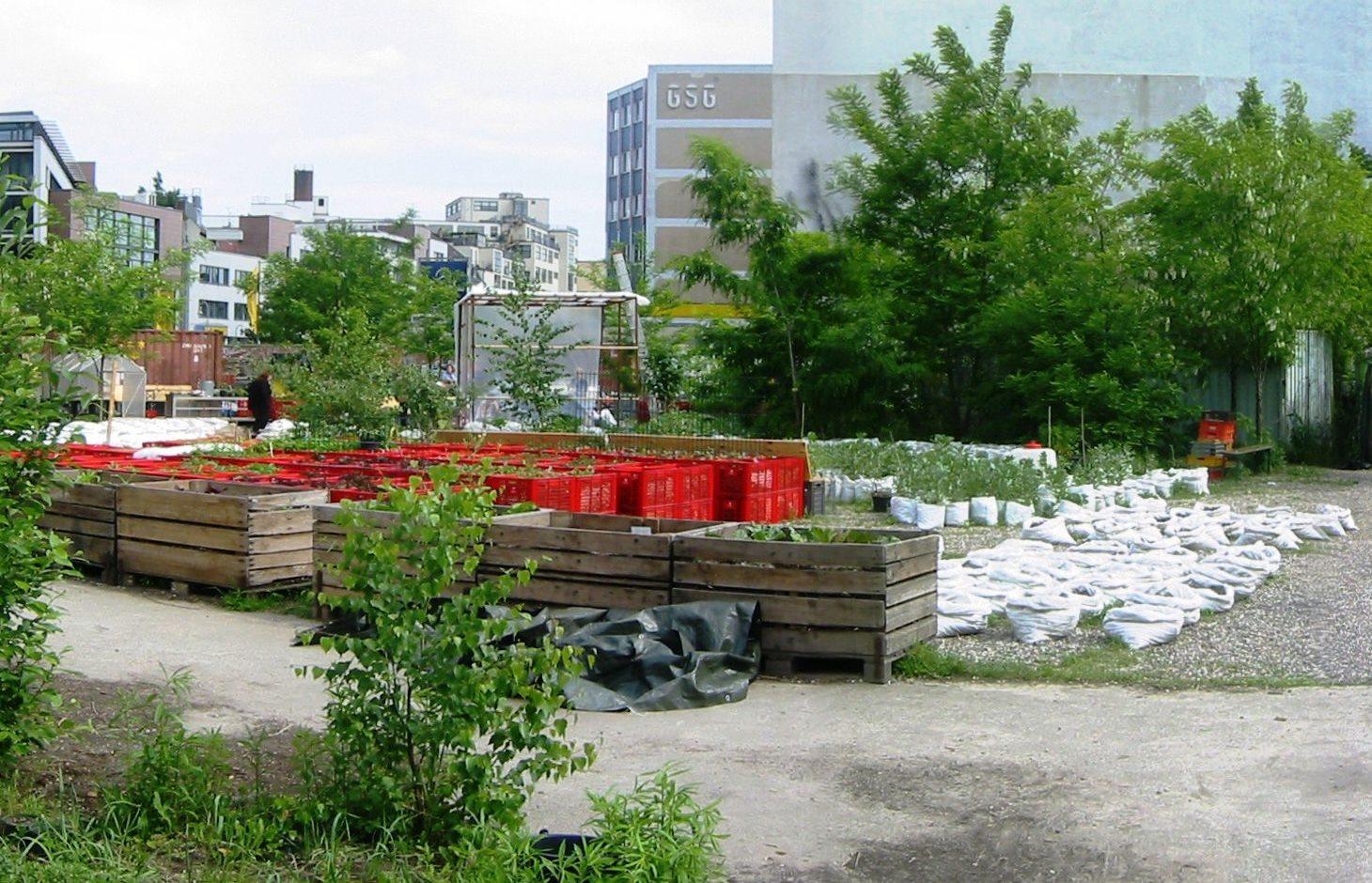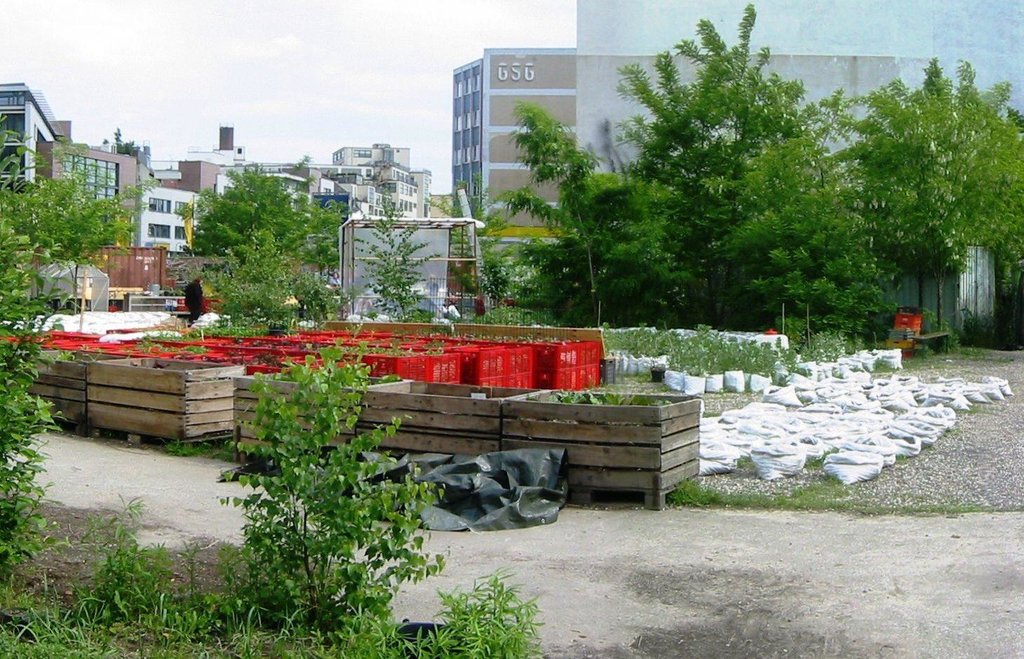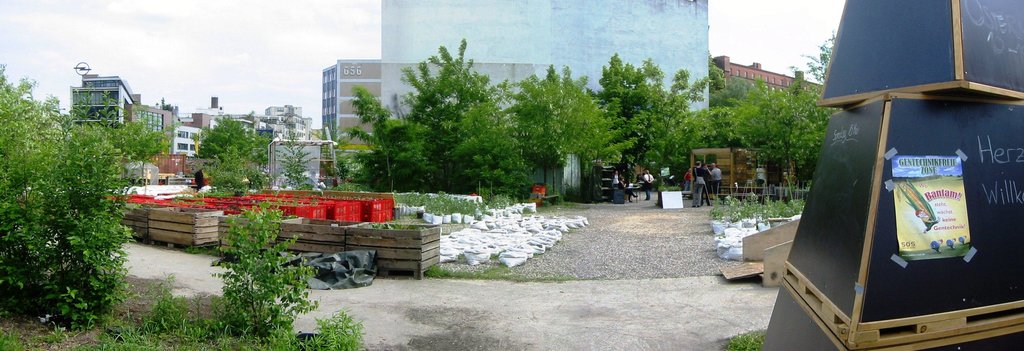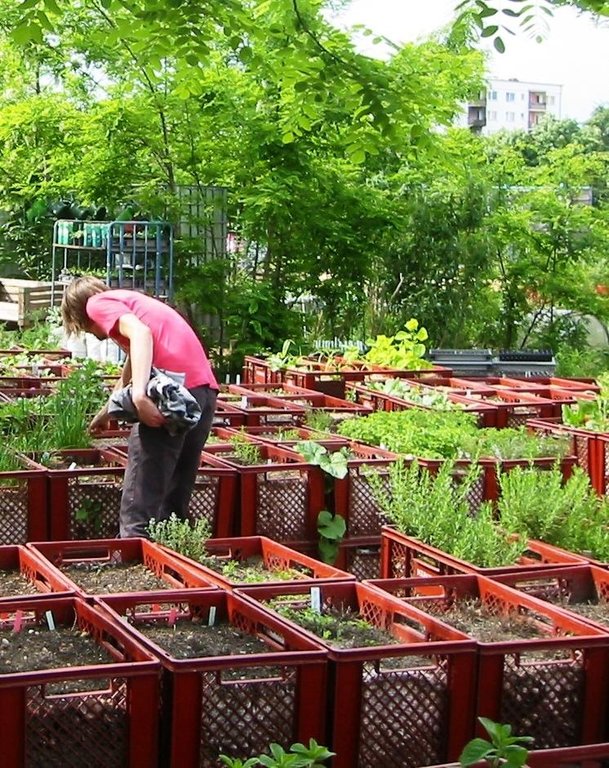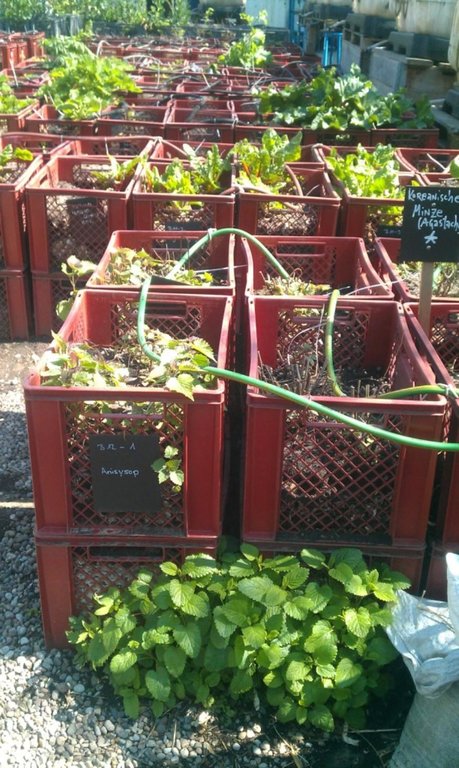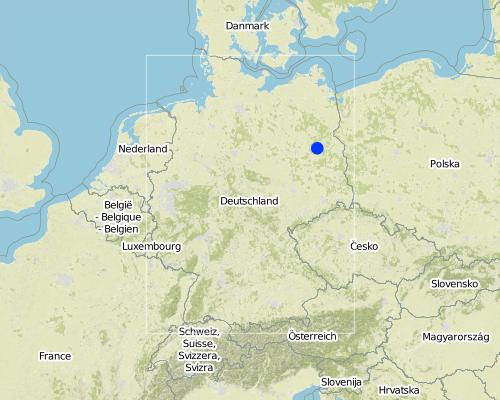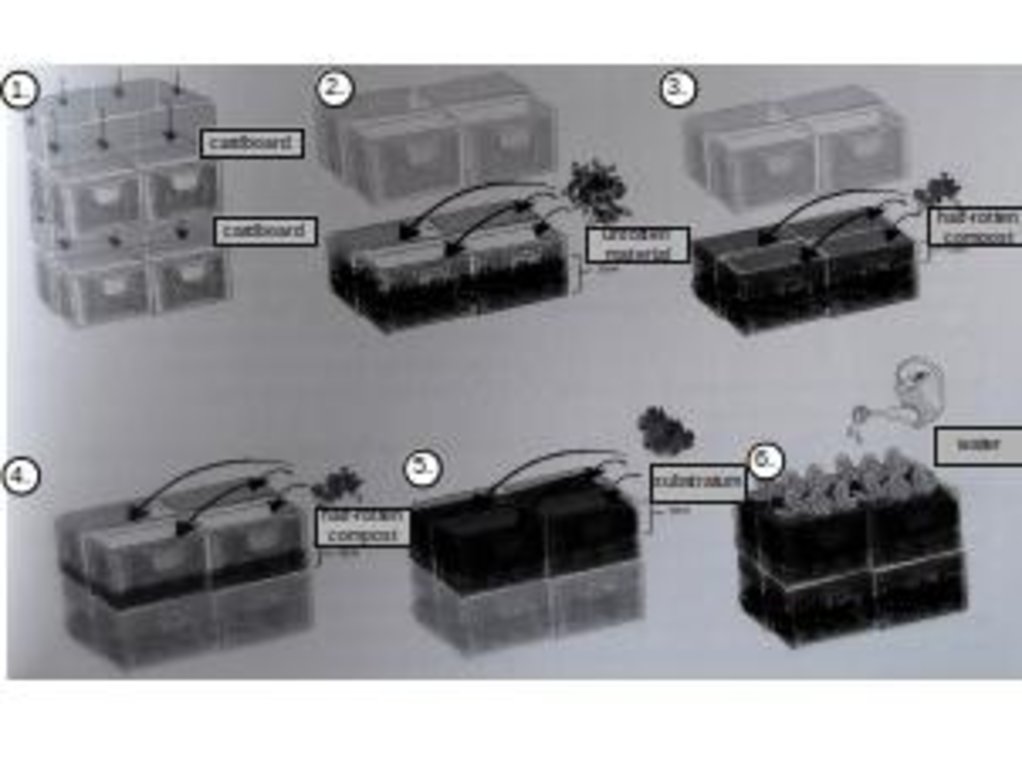Mobile cultivation beds [ألمانيا]
- تاريخ الإنشاء:
- تحديث:
- جامع المعلومات: Peter Kirch
- المحرر: –
- المُراجع: Fabian Ottiger
technologies_1678 - ألمانيا
عرض الأقسام
توسيع الكل طي الكل1. معلومات عامة
1.2 تفاصيل الاتصال بالأشخاص الرئيسيين لمصدر المعلومات والمؤسسات المشاركة في تقييم وتوثيق التقنية
الشخص (الأشخاص) الرئيسي لمصدر المعلومات
مستخدم الأرض:
Shaw Robert
+49(0)17624332297
rs@prinzessinnengarten.net
Nomadisch Grün gemeinnützige GmbH
Forster Str. 5, 10999 Berlin, HRB 121043 B 3
ألمانيا
Bärich Christian
متخصص في الإدارة المستدامة للأراضي:
اسم المؤسسة (المؤسسات) التي سهلت توثيق/تقييم التقنية (إذا كان ذلك على صلة)
Nomadisch grün GmbH - ألمانيااسم المؤسسة (المؤسسات) التي سهلت توثيق/تقييم التقنية (إذا كان ذلك على صلة)
Humboldt Universität zu Berlin (HU Berlin) - ألمانيا1.3 الشروط المتعلقة باستخدام البيانات الموثقة من خلال WOCAT
متى تم تجميع البيانات (ميدانيا)؟:
08/05/2015
يوافق جامع المعلومات والشخص (لاشخاص) الرئيسي لمصدر المعلومات على الشروط المتعلقة باستخدام البيانات الموثقة من خلال WOCAT:
نعم
2. وصف تقنيةالإدارة المستدامي للأراضي
2.1 وصف مختصر للتقنية
تعريف التقنية:
Mobile vegetable cultivation system for urban areas with "baker boxes" as main elements.
2.2 وصف تفصيلي للتقنية
الوصف:
The main technology applied in the urban gardening project "Princess gardens" can be described as mobile vegetable culitivation system based on the use of "baker boxes".
"Baker boxes" are plastic boxes (size: average area of 40 cm x 60 cm x 35 cm) made out of heat-resistant materials, which do not contain softeners. The bottom part as well as the side parts are formed in a grid pattern (holes of 1cm³ size).
For the vegetable production, cultivation units ("box towers" ) are built out of two boxes by placing them on top of each other. The lower box is filled with organic material (composition of the material like in a compost) and the upper box is filled with garden mould (or other earth material suitable for cultivation). To prevent the washing out of earth material through the grid pattern, carton is put on the bottom as well as on the side walls of the upper box.
During a period of time (length can vary from 1 to 3 years) the upper box can be cultivated according to the principles of "good practise" (e.g. crop rotation). During this time, the lower box serves as compost. In the course of each year this box is checked if the ongoing decomposition processes have lead to the creation of free space in the box. In this case, organic material needs to be refilled.
In the end of the 1-3 years-cultivation period the upper box is emptied and the contained earth material can be used for purposes such as landscaping. The box is then filled with organic material and switched with the lower box, which should contain "ready to cultivate"-compost material. The cultivation can then be restarted.
Purpose of the Technology: The purpose of the technology is to allow cultivation on sealed or contaminated soils. Through the use of the box towers as cultivation units the roots of the plants never get in touch with the soil. While the main rooting zone is to be found in the upper box, deeper rooting plants can grow down to 70 cm into the lower box without reaching the soil in place.
Another purpose of the technology is to create a mobile cultivation system. If needed, the boxes can be easily moved away even during the vegeation period.
Last but not least, the technology has the purpose to create a space, where knowledge sharing on a practical basis regarding the topics e.g. agriculture, sustainability and health can take place.
Establishment / maintenance activities and inputs: For the establishment of the technology first and foremost a sufficient number (depending on the size of the gardening area) of "baker boxes" is needed.
Maintenance activities consist of refilling the lower box with organic material.
This is also true for the required inputs.
Natural / human environment: The environment is strongly influenced by humans, as the first urban structures in this area already were established about 200 years ago. Regarding the topic soil this led to the conversion of the natural soils in place to Technosols.
2.3 صور التقنية
2.5 البلد/المنطقة/المواقع التي تم تنفيذ التقنية فيها والتي يغطيها هذا التقييم
البلد:
ألمانيا
المنطقة/الولاية/المحافظة:
Berlin
Map
×3. تصنيف تقنية الإدارة المستدامي للأراضي
3.2 نوع (أنواع) استخدام الأراضي الحالية حيث يتم تطبيق التقنية

المستوطنات والبنية التحتية
- المستوطنات والمباني
- حركة المرور: الطرق والسكك الحديدية
التعليقات:
Major land use problems (compiler’s opinion): The major land use problem can be addressed as a lack of cultivation plots within the urban areas. This is due to the fact that the soils are to a great extent sealed or contaminated.
As a result in the urban area there is also a lack of pratical learning areas which relate to the topics agriculture and soils.
Major land use problems (land users’ perception): As major land use problems the cultivation circumstances are regarded. This inculdes the topics of destroyed natural soil fertility and a lack of water infiltration into the ground.
Constraints of settlement / urban
Constraints of infrastructure network (roads, railways, pipe lines, power lines)
3.3 مزيد من المعلومات حول استخدام الأراضي
عدد مواسم الزراعة في السنة:
- 1
حدد:
Longest growing period in days: 200Longest growing period from month to month: April to October
3.4 مجموعةالإدارة المستدامة للأراضي التي تنتمي إليها هذه التقنية
- Cultivation on sealed or contaminated soils
3.5 انتشار التقنية
حدد انتشار التقنية:
- منتشرة بالتساوي على مساحة
إذا كانت التقنية منتشرة بالتساوي على منطقة ما، فحدد المنطقة التقريبية المغطاة:
- < 0.1 كم2 (10 هكتار)
التعليقات:
Total area covered by the SLM Technology is 0,006 m2.
3.6 التدابير التقنية في مجال إلادارة المستدامة للأراضي

التدابير البنيوية
- S11: غير ذلك

التدابير الإدارية
- M6: إدارة النفايات (إعادة التدوير أو إعادة الاستخدام أو التقليل)
التعليقات:
Main measures: structural measures, management measures
Specification of other structural measures: creation of cultivation plots
3.7 الأنواع الرئيسية من تدهور الأراضي التي تناولتها التقنية

التدهور المادي أو الفيزيائي للتربة
- (Pk)ظهور وتكون قشرة سطحية
- (Pu): فقدان الوظيفة الإنتاجية الحيوية بسبب أنشطة أخرى
التعليقات:
Main type of degradation addressed: Pk: sealing and crusting, Pu: loss of bio-productive function due to other activities
Main causes of degradation: urbanisation and infrastructure development (1 sealing (foundations of buildings were constructed in the area))
Secondary causes of degradation: population pressure (as a main cause for urbanisation), inputs and infrastructure: (roads, markets, distribution of water points, other, …) (need for public services in the city), governance / institutional (urban planning in the city)
3.8 منع أو حد أو عكس تدهور الأراضي
التعليقات:
Main goals: rehabilitation / reclamation of denuded land
Secondary goals: prevention of land degradation, mitigation / reduction of land degradation
4. المواصفات الفنية، وأنشطة التنفيذ، والمدخلات، والتكاليف
4.1 الرسم الفني للتقنية
4.2 المواصفات الفنية/شروحات الرسم الفني
edited by Peter Kirch on the basis of Daniel Müller/dkmnews in „Prinzessinengärten- Anders gärtnern in der Stadt“, Nomadisch Grün (Hg.),Dumont Buchverlag, Köln, 2012, page. 115
Location: Berlin. Germany
Date: 08.10.2015
Technical knowledge required for land users: moderate
Main technical functions: increase of biomass (quantity), promotion of vegetation species and varieties (quality, eg palatable fodder), spatial arrangement and diversification of land use
Structural measure: boxes
Spacing between structures (m): various
Depth of ditches/pits/dams (m): 0,35
Width of ditches/pits/dams (m): 0,4
Length of ditches/pits/dams (m): 0,6
Construction material (other): plastic (food-safe)
Change of land use type: urban area to urban gardening area
Layout change according to natural and human environment: area is limited through infrastructure elements (roads) and buildings.
4.3 معلومات عامة بخصوص حساب المدخلات والتكاليف
عملة أخرى/ عملة وطنية (حدد):
Euro
أشر إلى سعر الصرف من الدولار الأمريكي إلى العملة المحلية (إذا كان ذا صلة): 1 دولار أمريكي =:
0,9
4.4 أنشطة التأسيس
| النشاط | نوع التدبير | التوقيت | |
|---|---|---|---|
| 1. | putting boxes in place | بنيوية أو هيكلية |
4.8 أهم العوامل المؤثرة على التكاليف
قدم وصفا لأهم العوامل التي تؤثر على التكاليف:
Costs are affected by the wages for the employees and the rent of the plot
5. البيئة الطبيعية والبشرية
5.1 المناخ
هطول الأمطار السنوي
- < 250 مم
- 251- 500 ملم
- 501 - 750ملم
- 1,000-751 ملم
- 1,500-1,100 ملم
- 2,000-1,500 ملم
- 3,000-2,001 ملم
- 4,000-3,100 ملم
- > 4000 ملم
المنطقة المناخية الزراعية
- شبه رطبة
Thermal climate class: temperate
5.2 طوبوغرافيا
متوسط الانحدارات:
- مسطح (0-2%)
- بسيط (3-5%)
- معتدل (6-10%)
- متدحرج (11-15%)
- تلال (16-30%)
- شديدة الانحدار(31-60%)
- فائقة الانحدار (>60%)
التضاريس:
- هضاب/سهول
- أثلام مرتفعة
- المنحدرات الجبلية
- منحدرات التلال
- منحدرات في السفوح
- قاع الوادي
المنطقة الارتفاعية:
- 100-0 متر فوق سطح البحر
- 500-101 متر فوق سطح البحر
- 1,000-501 متر فوق سطح البحر
- 1,500-1,001 متر فوق سطح البحر
- 2,000-1,501 متر فوق سطح البحر
- 2,500-2,100 متر فوق سطح البحر
- 3,000-2,501 متر فوق سطح البحر
- 4,000-3,001 متر فوق سطح البحر
- > 4000 متر فوق سطح البحر
5.3 التربة
متوسط عمق التربة:
- ضحل جدًا (0-20 سم)
- ضحلة (21-50 سم)
- متوسطة العمق (51-80 سم)
- عميقة (81-120 سم)
- عميقة جدًا (> 120 سم)
قوام التربة (التربة السطحية):
- خشن / خفيف (رملي)
المواد العضوية في التربة السطحية:
- منخفضة (<1%)
إذا كان متاحًا، قم بإرفاق وصف كامل للتربة أو تحديد المعلومات المتوفرة، على سبيل المثال نوع التربة، الرقم الهيدروجيني/ درجة حموضة التربة، قدرة التبادل الكاتيوني، النيتروجين، الملوحة وما إلى ذلك.
Soil fertility is very low
Soil drainage/infiltration is poor
Soil water sotrage capacity is very low
5.4 توافر المياه ونوعيتها
منسوب المياه الجوفية:
50-5 م
توافر المياه السطحية:
جيد
نوعية المياه (غير المعالجة):
للاستخدام الزراعي فقط (الري)
تعليقات ومواصفات أخرى بشأن نوعية المياه وكميتها:
Seasonality of water quality and source of pollution: for agricultural use only (rainwater)
5.5 التنوع البيولوجي
تنوع الأنواع:
- متوسط
5.6 خصائص مستخدمي الأراضي الذين يطبقون التقنية
الدخل من خارج المزرعة:
- >50% من إجمالي الدخل
أفراداً أو مجموعات:
- المجموعات/ المجتمع المحلي
الجنس:
- نساء
- رجال
اذكر الخصائص الأخرى ذات الصلة لمستخدمي الأراضي:
Population density: > 500 persons/km2
Annual population growth: 2%
Relative level of wealth: very rich, rich, very poor
1% of the land users are very rich.
5% of the land users are rich.
50% of the land users are average wealthy.
40% of the land users are poor.
4% of the land users are poor.
5.7 متوسط مساحة الأرض المملوكة أو المستأجرة من قبل مستخدمي الأراضي الذين يطبقون التقنية
- < 0.5 هكتارا
- 0.5 - 1 هكتار
- 1 -2 هكتار
- 2 - 5 هكتار
- 5 - 15 هكتار
- 15 - 50 هكتار
- 50 - 100هكتار
- 500-100 هكتار
- 1,000-500 هكتار
- 10,000-1,000 هكتار
- > 10,000 هكتار
هل يعتبر هذا نطاقًا صغيرًا أو متوسطًا أو واسعا (في إشارة إلى السياق المحلي)؟:
- على نطاق صغير
5.8 ملكية الأراضي، وحقوق استخدام الأراضي، وحقوق استخدام المياه
ملكية الارض:
- مجتمعي/قروي
حقوق استخدام الأراضي:
- مؤجر
5.9 الوصول إلى الخدمات والبنية التحتية
الصحة:
- ضعيف
- معتدل
- جيد
التعليم:
- ضعيف
- معتدل
- جيد
المساعدة التقنية:
- ضعيف
- معتدل
- جيد
العمل (على سبيل المثال خارج المزرعة):
- ضعيف
- معتدل
- جيد
الأسواق:
- ضعيف
- معتدل
- جيد
الطاقة:
- ضعيف
- معتدل
- جيد
الطرق والنقل:
- ضعيف
- معتدل
- جيد
مياه الشرب وخدمات الصرف الصحي:
- ضعيف
- معتدل
- جيد
الخدمات المالية:
- ضعيف
- معتدل
- جيد
6. الآثار والتصريحات الختامية
6.1 الآثار التي أظهرتها التقنية في الموقع
الآثار الاجتماعية والاقتصادية
الإنتاج
إنتاج المحاصيل
الكمية قبل الإدارة المستدامة للأراضي:
0
الكمية بعد الإدارة المستدامة للأراضي:
100
تنوع المنتج
منطقة الإنتاج
الدخل والتكاليف
دخل المزرعة
الكمية قبل الإدارة المستدامة للأراضي:
0
الكمية بعد الإدارة المستدامة للأراضي:
100
تنوع مصادر الدخل
الآثار الاجتماعية والثقافية
الأمن الغذائي / الاكتفاء الذاتي
الوضع الصحي
الفرص الثقافية
الفرص الترفيهية
المؤسسات المجتمعية
المؤسسات الوطنية
وضع الفئات المحرومة اجتماعيا واقتصاديا
Improved livelihoods and human well-being
التعليقات/ حدد:
The "Prinzessinnengarten" is more than just a place to grow vegetables in the city. It is a space for diverse activities. Through the opportunity to contribute and to participate in open workshops, through the garden café and a variety of cultural events, the "Prinzessinnengarten" has become a lively meeting place far beyond the neighborhood.
الآثار الايكولوجية
دورة المياه / الجريان السطحي
كمية المياه
جودة المياه
حصاد / جمع المياه
الجريان السطحي
التربة
رطوبة التربة
غطاء التربة
المادة العضوية في التربة/تحت الطبقة c
التنوع البيولوجي: الغطاء النباتي، الحيوانات
الكتلة الحيوية/ طبقة الكربون فوق التربة
التنوع النباتي
التنوع الحيواني
تنوع الموائل
6.3 تعرض التقنية وحساسيتها لتغير المناخ التدريجي والظواهر المتطرفة/الكوارث المرتبطة بالمناخ (كما يراها مستخدمو الأراضي)
تغير مناخ تدريجي
تغير مناخ تدريجي
| الموسم | نوع التغير المناخي/ المتطرف | كيف تتعامل التقنية مع ذلك؟ | |
|---|---|---|---|
| درجة الحرارة السنوية | زيادة | غير معروف |
الظواهر المتطرفة / الكوارث المرتبطة بالمناخ
الكوارث الجوية
| كيف تتعامل التقنية مع ذلك؟ | |
|---|---|
| عاصفة ممطرة محلية | ليس جيدا |
| عاصفة هوائية محلية | غير معروف |
الكوارث المناخية
| كيف تتعامل التقنية مع ذلك؟ | |
|---|---|
| جفاف | غير معروف |
الكوارث الهيدرولوجية
| كيف تتعامل التقنية مع ذلك؟ | |
|---|---|
| فيضان عام (نهر) | ليس جيدا |
العواقب الأخرى المتعلقة بالمناخ
العواقب الأخرى المتعلقة بالمناخ
| كيف تتعامل التقنية مع ذلك؟ | |
|---|---|
| انخفاض فترة النمو | غير معروف |
6.4 تحليل التكلفة والعائد
التعليقات:
An economic analysis is hard to make, as the main goal of the project is not economical profit. In the interviews it was stated, that each year about 50.000 people visit the garden. To have an outreach to such a high number of people with a budget of about 500.000 € is regarded as "benefical" by the project members.
Only looking at the financing part it was stated in the interview that the garden is one of the very few urban gardening projects that can provide for its recurrent costs itself.
6.5 اعتماد التقنية
التعليقات:
Comments on adoption trend: The members of the "Prinzessinnengarten" are supporting other land users to implement urban gardening projects through giving them advise. Up to 100 urban gardening projects were supported this way. The support is often funded by foundations. How to receive such funding is communicated by the Prinzessinnengarten to the ones seeking their advise.
6.7 نقاط القوة / المزايا / الفرص التي توفرها التقنية
| نقاط القوة/ المزايا/ الفرص من وجهة نظر مستخدمي الأراضي |
|---|
| light and long-lasting production units |
| a great part of the needed material has been recylced |
| standardized format of the production units (fitting even to international cargo norms) |
| نقاط القوة/ المزايا/ الفرص من وجهة نظر جامع المعلومات أو غيره من الاشخاص الرئيسيين لمصدر المعلومات |
|---|
| mobile, flexible cultivation system |
| allows cultivation on sealed or polluted soils |
| open access technology |
| knowledge sharing as key priority |
6.8 نقاط ضعف / مساوىء / مخاطر التقنية وسبل التغلب عليها
| نقاط الضعف/ المساوىء/ المخاطر من وجهة نظر مستخدم الأراضي | كيف يمكن التغلب عليها؟ |
|---|---|
| limited productivity | |
| are highly dependent on irrigation, as the boxes dry-out fast (high evaporation/ surface area) | |
| Soil can be easily lost/washed out throught the grid pattern (especially in the long term, when the erosion measures are reduced (decomposition of carton) | |
| The spacing in between the boxes serves as habitat for snails. | |
| The carton sometimes rots away in the course of the cultivation period. This leads to a loss of soil material out of the boxes. |
| نقاط الضعف/ المساوىء/ المخاطر من وجهة نظر جامع المعلومات أو غيره من الاشخاص الرئيسيين لمصدر المعلومات | كيف يمكن التغلب عليها؟ |
|---|---|
| dependent on a high supply of "baker boxes" | |
| dependent on external inputs (especially organic material) | |
| allows only for hand labour |
7. المراجع والروابط
7.2 المراجع للمنشورات المتاحة
العنوان، المؤلف، السنة، النظام القياسي الدولي لترقيم الكتب ISBN:
Urban Gardening. Über die Rückkehr der Gärten in die Stadt. Christa Müller, 2011.
متاح من أين؟كم التكلفة؟:
ISBN 3-86581-244-9
العنوان، المؤلف، السنة، النظام القياسي الدولي لترقيم الكتب ISBN:
Prinzessinnengärten. Anders gärtnern in der Stadt. Marco Clausen, 2012
متاح من أين؟كم التكلفة؟:
DuMont,ISBN 3-8321-9436-3
الروابط والوحدات المواضيعية
توسيع الكل طي الكلالروابط
لا يوجد روابط
الوحدات المواضيعية
لا يوجد وحدات مواضيعية


